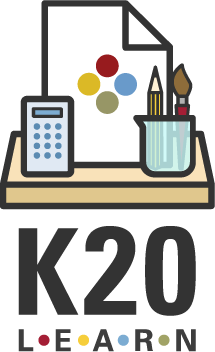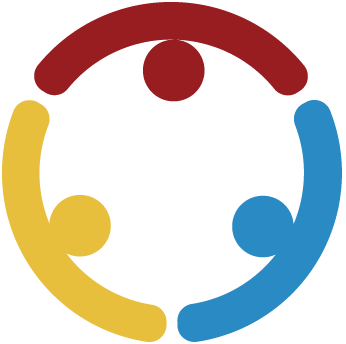Summary
In this lesson, students will be introduced to general types of chemical reactions. They will look for patterns to group similar reactions together, then use that as a way to put academic language to those groups. A basic understanding of chemical reactions and notation is necessary to complete this lesson.
Essential Question(s)
What patterns are present in chemical reactions?
Snapshot
Engage
Students watch and discuss a video.
Explore
Students group reactions together and do a Gallery Walk of what other students are thinking.
Explain
Students are introduced to different reaction types.
Extend
Students complete a station lab with multiple types of reactions.
Evaluate
Students participate in a Chalk Talk to synthesize their knowledge.
Materials
Lesson Slides (attached)
Card Sort handout (attached; one set per group; print on cardstock)
Reaction Lab Student Guide handout (attached; one per student)
Station Set Up and Guide document (attached)
Sticky notes (four per group)
Poster boards/paper (four per class)
Lab supplies for six stations:
Safety goggles (one per student)
Gloves (one per student)
Apron (one per student)
Waste disposal containers (one for each station)
Solid zinc
Concentrated hydrochloric acid
Copper (II) carbonate
Solid copper
Solid sulfur
Solid sodium bicarbonate
Magnesium strip
Potassium iodine solution
Wooden splints
Test tube with stand (or test tube rack)
Bunsen burners
Lead (II) nitrate solution
Disposable pipettes
Test tube clamp/holder
Spatula
Tongs
Evaporating dish
Crucible or heat-safe dish
Preparation
Card Sort Activity Preparation
Prior to the activity, print out enough copies of the attached Card Sort handout so that each group of 3–4 students has a set of cards. Cut out the cards along the dotted lines. Consider printing the cards on card stock or laminating them so they can be reused.
Lab Set-Up
Prior to conducting the lab with students, use the attached Station Set-Up and Guide document for instructions on how to set up the lab as well as a list of required materials.
Evaluate Activity Preparation
Before conducting the Evaluate activity, place four large poster boards or sheets of paper around the room. Each poster should have one of the following questions written on it and enough space for students to write their responses.
How are all the reaction types different?
How are the reactions types similar?
What made the lab difficult?
What was the most important thing that you learned today?
Engage
15 Minute(s)
Use the attached Lesson Slides to guide the lesson. Transition through slides 3–4 and go over the essential question and learning objectives with students.
Move to slide 5 and review the proper way to set up and identify the parts of a chemical formula. Inform students that they will be watching a video of children reacting to eating chicken feet and that during the video, they should write down what represents the reactants, reaction (yield), and the products. They should also jot down all of the different reactions they notice.
Move to slide 6 and play the KIDS vs. FOOD – CHICKEN FEET video and remind students to think about what happens to cause each reaction.
After playing the video, have students discuss their observations of the different reactions with an Elbow Partner. When they are finished, ask partners, "What happened to make each reaction?" Allow students to discuss why the kids in the video were reacting the way they did.
Move to slide 7 and explain that the reactants are the child and chicken feet, the actual eating is the arrow, and the product is how the students feel about the chicken feet once they're together.
Explore
25 Minute(s)
Display slide 8 and place students into groups of 3–4. Introduce students to the Card Sort strategy and pass out a set of cards from the attached Card Sort handout to each group.
Instruct students to examine the cards and match similar reactions together. If students struggle to get started, ask them leading questions, such as:
What do you notice that's the same?
What do you notice that's different?
It may be tempting to give students the answers but resist this as much as possible.
Distribute sticky notes to each group. Ask them to use two sticky notes per reaction group: one to label each group and one to explain why they grouped them the way they did.
Using the Gallery Walk strategy, have each group walk around and view the other groups’ Card Sorts and justifications for their reaction groups. When they are finished, allow students to return to their groups and discuss whether they want to rearrange any of the cards.
Explain
25 Minute(s)
Display slide 9 and begin revealing the solution to the Card Sort activity.
Slide 10 includes the solution for the synthesis category of reactions. Have students copy the definition of synthesis into their notes. Then, ask students to compare the solution on the slide to the solution their group came up with.
Optionally, have students physically demonstrate each type of reaction (with their hands or body, for example) before moving on to the next one. Invite students to share their demonstrations with the rest of the class if they are especially proud of it.
Transition through slides 11–16 and repeat this process for each of the different reaction categories.
Extend
45 Minute(s)
Display slide 17 and pass out a copy of the attached Reaction Lab Student Guide handout to each student.
Place students into six groups and assign one group to each of the six lab stations. The stations each focus on one of six reactions:
Station 1, single replacement: zinc and hydrochloric acid
Station 2, decomposition: heated copper (II) carbonate with a burning splint
Station 3, combustion: magnesium strip in Bunsen burner
Station 4, precipitation/double replacement: potassium iodide and lead (II) nitrate
Station 5, synthesis: copper and sulfur, must be done in fume hood
Station 6, acid/base: sodium bicarbonate and hydrochloric acid
Have students rotate through each of the six stations and answer all the questions at the end of the lab handout. When everyone is finished, transition through slides 18–23 to provide and discuss the solutions with students.
Evaluate
15 Minute(s)
Display slide 24 and introduce students to the Chalk Talk strategy.
Have students silently walk around the room to each poster and write their answers to the questions. Encourage them to read and respond to their classmates’ answers.
When students have visited and responded to each question poster, have them return to their seats. Use their answers as a formative assessment to see if the students understand the different reaction types.
Resources
K20 Center. (n.d.). Elbow partners. Strategies. https://learn.k20center.ou.edu/strategy/116
K20 Center. (n.d.). Gallery walk / carousel. Strategies. https://learn.k20center.ou.edu/strategy/118
K20 Center. (n.d.). Card sort. Strategies. https://learn.k20center.ou.edu/strategy/147
K20 Center. (n.d.). Chalk talk. Strategies. https://learn.k20center.ou.edu/strategy/197
Kids REACT. (2 Aug., 2016). KIDS vs. FOOD - CHICKEN FEET [Video]. YouTube. https://www.youtube.com/watch?v=xBSzlvQOvfk&t=1s


